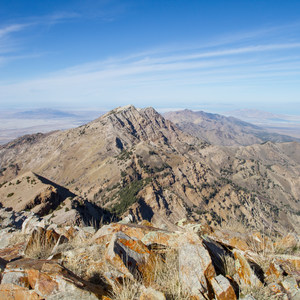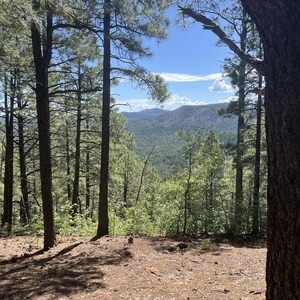You are here
Deseret Peak, being both a county and range highpoint as well as one of the 57 ultra-prominent peaks in the Lower 48, attracts a good deal of attention. Even so, the mountain recieves far less visitation than the nearby Wasatch Range, and crowds are moderate at most. The mountain is also surrounded by the Deseret Peak Wilderness, which is one of the nine wilderness areas managed by the Uinta-Wasatch-Cache National Forest in Northen Utah. Most people come to this area to climb Deseret Peak, but there are several other mountains in the Stansbury Range that are just as enjoyable and receive far less attention. Perhaps the best way to experience the heart of the Deseret Peak Wilderness is to do the Stansbury Traverse, which links Deseret Peak and South and North Willow peaks together into a 10-mile loop.
At 10,685 feet, South Willow Peak is the second highest peak in the Stansbury Mountains, and it lies about 2 miles North of Deseret. North Willow Peak (10,521 feet) is the third highest in the range, and it is another half mile or so north of South Willow. Most of the distance between Deseret and South Willow has a well traveled trail, but once the lower slopes of South Willow are reached it is neccessary to leave the trail and scramble to the top of the peak and across the saddle to North Willow. Both peaks are similar to Deseret, with large cliffs on their east faces. However, there are a couple of small lakes below the peaks, and you are virtually guaranteed to see no one on these mountains. As you hike you'll notice that most of the west side of the mountain range was burned in a large fire not too long ago. Because the area is very hot and dry (right on the edge of the Great Salt Lake Desert), it will take a long time for any trees to grow back, if they do at all. The fire touched the top of the ridge in a few places, so you will walk through stands of dead timber at times. The views from each of the summits and aliong the ridgeline are spectacular. On clear days you can see much of the Great Salt Lake, Wasatch Range, and west to Nevada.
To make this traverse, start by climbing Deseret from the Loop Campground Trailhead via the Mill Fork Trail. At the summit of Deseret, continue north on the trail until you reach the top of Pockets Fork and the base of South Willow. From there, continue off-trail, following the ridgeline and scramble to the top of South Willow. Continue north along the ridge and across the saddle to North Willow Peak. Return the way you came and meet the trail again at the top of Pockets Fork. Descend via Pockets Fork and return to the Loop Camground Trailhead. This route makes a loop that is just over 10 miles and has over 5,600 feet of elevation gain. Bring plenty of water, as there is none available, especially along the ridge. Expect to see plenty of wildflowers and wildlife. It makes for a great full day in the mountains, experiencing some of the best of Utah's out-of-the-way wilderness areas.








Comments
Sign In and share them.